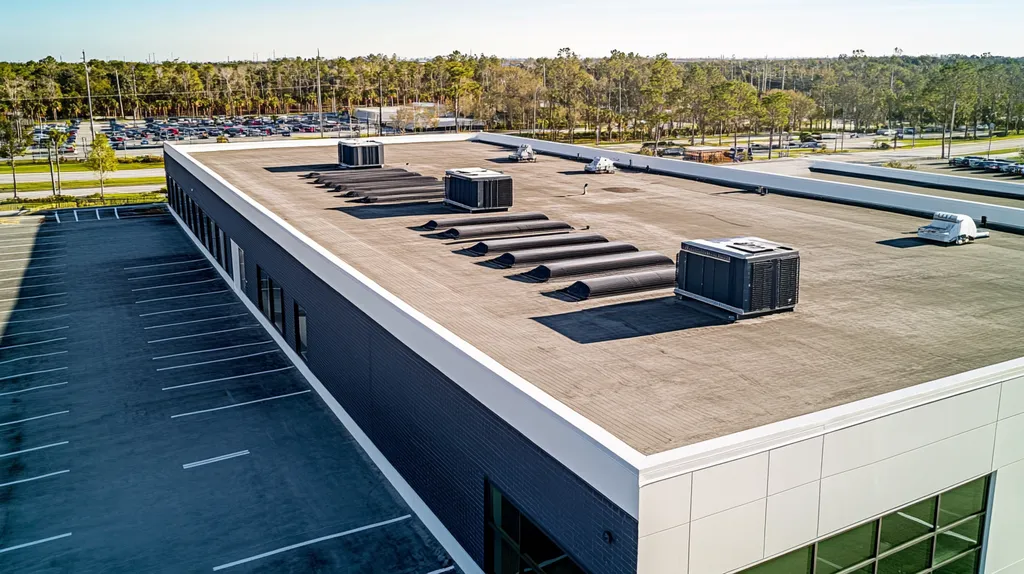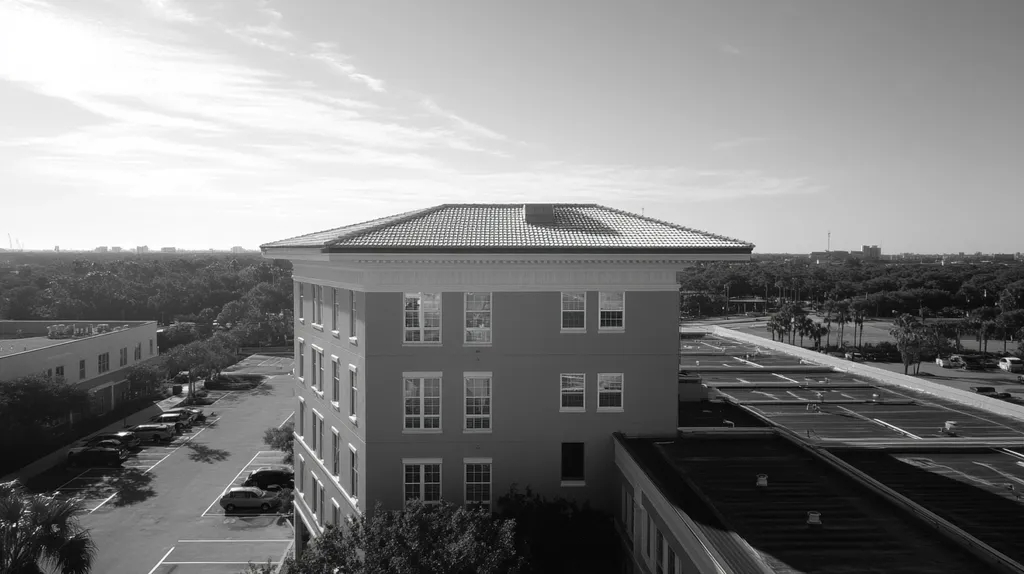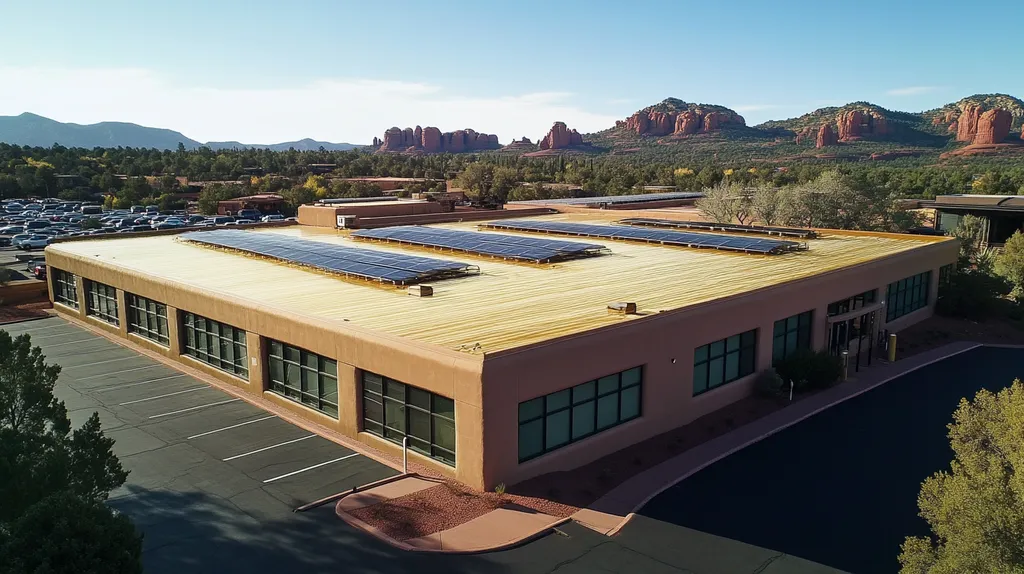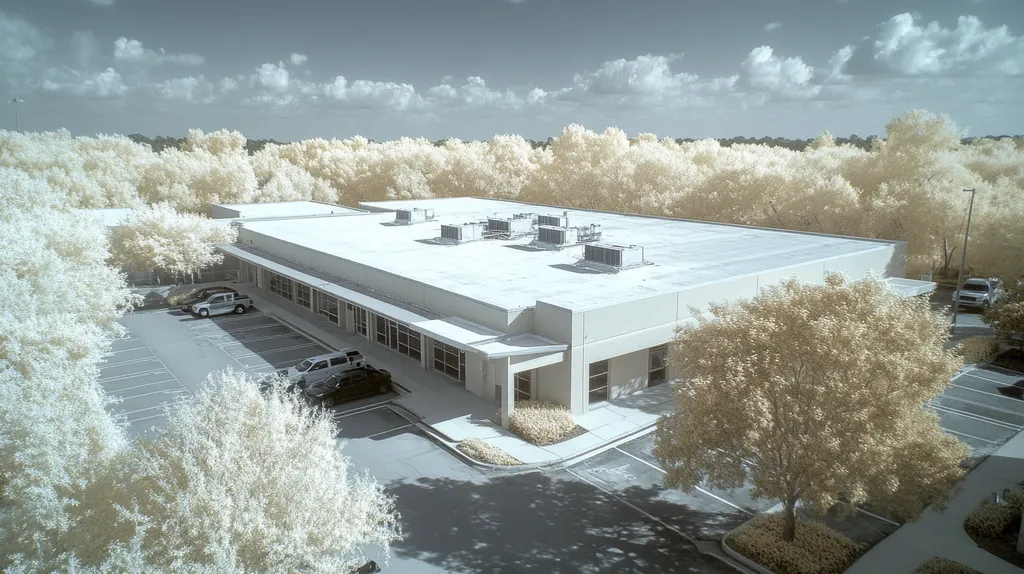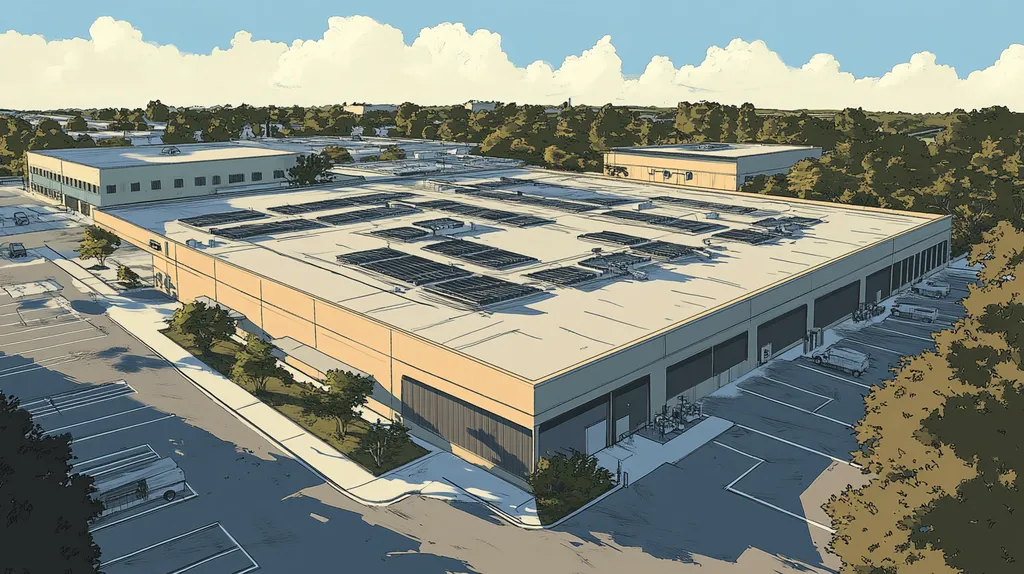Every year, thousands of commercial property owners face devastating fines and project shutdowns because they mishandled one critical element: roofing permits. In fact, over 40% of commercial roof installations encounter costly delays due to permit-related issues.
From local building codes to inspection requirements, navigating the permit landscape can feel like solving a complex puzzle while standing on a roof in high winds. Yet understanding this process is non-negotiable for project success.
This comprehensive guide breaks down everything property owners and facility managers need to know about commercial roofing permits, from fundamental concepts to optimization strategies that keep projects on track and compliant.
SECTION 1: FUNDAMENTAL CONCEPTS
Think your commercial roof project just needs a crew and some materials? Think again! Every year, thousands of building owners face shocking fines and costly re-work because they skipped one crucial step: proper permitting. Your roof isn’t just another construction project – it’s a highly regulated component that protects millions in assets and, more importantly, the people beneath it.
Overview of Commercial Roofing Permit Requirements
Commercial roofing permits aren’t just bureaucratic paperwork – they’re your building’s passport to compliance and safety. Each municipality has its own unique requirements, but they all share one common goal: ensuring your roof meets strict safety and performance standards.
The St. Louis City Government’s commercial permitting process illustrates the complexity perfectly – requiring five sets of sealed construction drawings, specifications, structural calculations, and more, all prepared by registered design professionals. (source: St. Louis City Government)
Different project types trigger different permit requirements. A simple repair might need a basic permit, while a complete replacement could require multiple approvals, especially if you’re changing materials or structural elements.
Smart building owners start the permit process early – ideally before even selecting a contractor. This proactive approach prevents costly delays and ensures your project stays on track from day one.
Understanding Local Building Codes and Regulations
Building codes aren’t just rules written by clipboard-wielding bureaucrats – they’re life-saving guidelines shaped by decades of real-world experience. These codes evolve constantly as new materials emerge and weather patterns change.
Your local climate plays a starring role in code requirements. Buildings in hurricane zones need different specifications than those in snow country, and desert environments have their own unique demands.
Energy efficiency requirements are becoming increasingly stringent. Many jurisdictions now mandate specific R-values, reflective ratings, and even green roof provisions.
Historic districts and special overlay zones add another layer of complexity. These areas often have strict guidelines about materials, colors, and even installation methods.
Roles of Contractors and Property Owners in Permitting
Think of the permitting process as a three-legged race – both contractor and property owner need to move in perfect sync. While contractors typically handle the technical aspects, owners must stay actively involved.
Your contractor should provide detailed documentation of their permitting strategy before work begins. This includes timeline estimates, cost breakdowns, and contingency plans for potential regulatory hurdles.
Never assume your contractor will handle everything. Smart property owners maintain copies of all permit documentation and regularly verify that work matches approved plans.
Keep communication channels wide open throughout the process. Regular check-ins between owner and contractor can catch potential permit issues before they become expensive problems.
Remember that ultimate responsibility for permit compliance rests with the property owner. Choose contractors with proven track records of successful permitting in your jurisdiction.
SECTION 2: SYSTEM COMPONENTS
Think your roofing project is just about finding the right contractor and materials? Here’s a wake-up call: over 30% of commercial roofing projects get derailed by permit-related issues. Just like a championship football team needs more than just players – they need playbooks, referees, and rulebooks – your roofing project needs a complete system of permits, documentation, and inspections to succeed.
Types of Permits Relevant to Roofing Projects
Welcome to the permit playbook! Your commercial roofing project might need several types of permits, and missing just one could send your whole project to the penalty box.
For a new roof or overlay on a commercial structure, you’ll need permits that must remain on-site until final approval, with potential reviews required from multiple departments including Structural, Fire Marshall, and Engineering teams. (source: Houston Permitting Center)
Special-use permits might come into play if your building sits in a historic district or faces unique zoning requirements. These extra permissions ensure your new roof plays nicely with neighborhood guidelines.
Environmental permits are becoming the MVPs of modern roofing, especially if you’re installing green features or solar-ready systems. Don’t let these catch you off guard!
Documentation and Plan Submission Essentials
Think of your documentation package as your project’s all-access pass. Without the right paperwork, your project won’t even make it past security.
Your game plan should include detailed construction drawings showing exactly how the new roof will be installed. These aren’t just pretty pictures – they’re your blueprint for success.
Material specifications are your project’s roster, listing every player from membrane thickness to fastener types. Make it comprehensive but crystal clear.
Load calculations prove your roof can handle whatever Mother Nature throws its way. These numbers need to be precise and professionally certified.
Inspection Procedures and Compliance Checks
Inspections are like instant replay reviews – they ensure everything’s being done by the book. Skipping these checkpoints is asking for trouble.
The first inspection usually happens after tear-off but before any new materials go down. This crucial look at your roof’s bones can spot potential problems early.
Progress inspections act as your project’s scorekeepers, tracking installation quality at key milestones. Keep your permit visible and plans handy – inspectors love organized job sites.
The final inspection is your championship game – everything needs to be perfect. Smart contractors schedule these well in advance and have all documentation ready for review.
SECTION 3: IMPLEMENTATION METHODS
Think permit implementation is just paperwork shuffling? Here’s a reality check: over 40% of commercial roofing projects face costly delays because owners didn’t navigate the permit maze correctly. Just like a championship chess match, winning the permit game requires strategy, foresight, and knowing exactly when to make your moves.
Preparing and Submitting Permit Applications
Your permit application isn’t just another form – it’s your project’s VIP pass to success. The Ohio Department of Commerce requires all commercial roofing permits to be submitted through their digital portal, with detailed construction plans sealed by registered design professionals. (source: Ohio Department of Commerce)
Think of your application package as a movie trailer – it needs to tell your project’s complete story in a way that gets instant approval from the critics (aka permit reviewers). Include everything from structural calculations to drainage details.
Timing is everything in the permit game. Submit too early, and your plans might not be fully baked. Submit too late, and you’re looking at crews standing idle while you wait for approvals.
Smart players keep a permit checklist and review it obsessively. Missing even one required document can send you back to square one.
Coordinating with Local Authorities and Agencies
Welcome to the networking game of permit coordination! Building strong relationships with local authorities isn’t just nice – it’s necessary for keeping your project on the fast track.
Schedule pre-application meetings like you’re planning a strategic summit. These face-to-face sessions can save weeks of back-and-forth emails and prevent costly misunderstandings.
Create a communication flowchart showing exactly who needs to know what and when. Nothing derails a project faster than information getting stuck in bureaucratic bottlenecks.
Keep your permit team’s contact list updated and handy. When questions arise (and they will), you’ll want to reach the right person immediately.
Managing Permit Approvals and Addressing Denials
Got your permit approval? Fantastic – but don’t pop the champagne just yet! Now comes the crucial phase of understanding and following every single condition listed.
Create a permit compliance calendar marking all inspection milestones. Missing these checkpoints is like skipping toll booths on the highway – you’ll pay dearly for it later.
If you hit the dreaded denial wall, don’t panic! Treat it like a puzzle to be solved, not a dead end. Most denials come with specific instructions for getting to “yes.”
Build relationships with experienced contractors who know the local permit landscape. They can often spot potential problems before they become permit-killing issues.
Document everything – every conversation, every email, every decision. When permit questions arise (and they will), your paper trail will be your best friend.
SECTION 4: MAINTENANCE REQUIREMENTS
Think maintaining your commercial roof ends when the installation crew packs up? Think again! Every year, thousands of building owners face devastating consequences because they dropped the ball on post-permit compliance. Your shiny new roof isn’t just sitting pretty up there – it’s a dynamic system that needs ongoing attention to stay legal and functional.
Ongoing Compliance with Permit Conditions
Your permit isn’t just a one-and-done document – it’s your roof’s rulebook for its entire lifetime. Missing just one requirement can trigger a domino effect of violations and penalties.
Regular compliance reviews should become as routine as checking your email. Smart building owners create digital checklists that track every permit condition and maintenance requirement.
Energy efficiency standards often change, and your roof needs to keep up. Many jurisdictions now require periodic testing to ensure your roof maintains its initial performance ratings.
When in doubt, consult your original permit documentation. Those specifications weren’t suggestions – they’re legally binding requirements that protect your investment and your building’s occupants.
Scheduling and Preparing for Periodic Inspections
The City of Portland’s Commercial Reroof Program requires specific inspection codes – 285 for roofing inspection and 999 for final inspection – demonstrating how precise these requirements can be. (source: Portland.gov Commercial Reroof Permit and Inspection Program)
Think of inspections as your roof’s regular check-ups. Just like skipping doctor visits can lead to health problems, avoiding inspections can result in costly violations.
Create a master inspection calendar that accounts for seasonal weather patterns. Smart scheduling means never scrambling to prepare or facing delays due to poor timing.
Before each inspection, conduct your own preliminary assessment. This practice helps catch potential issues before they become official violations.
Recordkeeping for Permits and Maintenance Activities
Your maintenance records are your roof’s biography – they tell the complete story of every repair, inspection, and modification. Missing chapters can come back to haunt you during audits or property transfers.
Digital record-keeping systems aren’t just convenient – they’re essential for modern facility management. Cloud storage ensures your documentation survives even if your physical files don’t.
Photograph everything! Visual documentation of maintenance activities provides undeniable proof of compliance and helps track changes over time.
Establish a clear chain of custody for all permit-related documents. Everyone involved in roof maintenance should know exactly where to find and how to update these critical records.
SECTION 5: PERFORMANCE METRICS
Think tracking roofing permit performance is just pushing paper? Here’s a wake-up call: projects without proper metrics monitoring rack up an average of 40% more in unexpected costs and delays. Your commercial roof project isn’t just a construction job – it’s a complex dance of deadlines, requirements, and inspections that needs precise choreography to succeed.
Tracking Timeline and Cost Metrics for Permitting
Your permit timeline isn’t just a suggestion – it’s your project’s heartbeat. Every day of delay can pump thousands of dollars into your budget through idle crew costs, material storage fees, and extended equipment rentals.
Roofing permits are required for all commercial roofing in Austin, Minnesota, with specific requirements for detailed plan submissions including roof areas involved, type of roof assembly, and U.L. Listing for roof assemblies. (source: City of Austin, Minnesota)
Smart project managers track three key timeline metrics: submission-to-approval duration, inspection scheduling gaps, and resolution time for any deficiencies. These numbers tell the real story of your permit efficiency.
Create a digital dashboard that flags when any permit-related timeline exceeds local averages. This early warning system can help you pivot before minor delays become major disasters.
Cost tracking should include both direct permit fees and indirect expenses like expedited processing charges, revision costs, and any contractor standby fees. These hidden costs often surprise owners who focus only on the basic permit price tag.
Quality Control Indicators from Inspection Reports
Think of inspection reports as your roof’s report card – they tell you exactly where you’re excelling and where you need improvement. Smart managers track more than just pass/fail results.
Create a scoring system for common inspection points like material compliance, installation quality, and safety measures. This numerical approach helps identify trends before they become problems.
Track the ratio of first-time inspection passes to failures. A high failure rate often signals underlying issues with contractor performance or permit preparation.
Document resolution patterns for any inspection issues. Quick fixes might look good initially, but repeated problems in the same areas suggest deeper systemic challenges.
Use digital tools to compare inspection results across different project phases. This birds-eye view helps spot patterns that might be missed when looking at individual reports.
Measuring Compliance Rates and Project Outcomes
Your compliance rate isn’t just a number – it’s your project’s vital signs monitor. Top-performing projects typically maintain compliance rates above 95%, while struggling projects often dip below 80%.
Track compliance across three key categories: documentation completeness, code adherence, and safety requirements. Each category needs its own specific metrics and acceptable performance ranges.
Build a scorecard that weights different compliance factors based on their impact on project success. Not all compliance issues carry equal weight – prioritize those that could stop work or trigger penalties.
Monitor the correlation between compliance rates and final project outcomes. High compliance typically translates to smoother inspections, fewer callbacks, and better long-term roof performance.
Create monthly compliance summaries that highlight both victories and challenges. This regular review helps teams stay focused on maintaining high standards throughout the project lifecycle.
SECTION 6: OPTIMIZATION STRATEGIES
Think permit optimization is just about working faster? Here’s a reality check: poorly managed permit processes drain an average of 22% from commercial roofing budgets through delays, rework, and missed opportunities. Your permit strategy isn’t just paperwork – it’s the difference between a smooth-sailing project and a costly quagmire of delays and violations.
Streamlining Permit Acquisition Processes
Almost all roofing projects require permits, with requirements varying dramatically by region – especially in areas prone to extreme weather. Local building codes enforce these requirements through multiple inspections that can significantly impact project timelines if not managed properly. (source: PermitFlow)
Create a permit war room – physical or virtual – where every document, timeline, and requirement lives in perfect organization. This central command center becomes your project’s mission control.
Build relationships with permit officials like you’re networking at a business conference. Regular face-time and professional courtesy can transform bureaucratic roadblocks into speedbumps.
Schedule pre-application meetings early – they’re your chance to spot potential problems while they’re still easy to fix. Think of these as dress rehearsals for your main permit performance.
Leveraging Technology for Documentation and Tracking
Welcome to the digital age of permit management! Modern cloud-based systems can track every permit document, deadline, and inspection requirement with military precision.
Transform your permit workflow into a digital symphony where every player knows their part. Automated alerts ensure nobody misses a cue, while shared dashboards keep everyone on the same page.
Deploy mobile apps that let your team update permit documentation in real-time. No more waiting for paper forms to make their way back to the office.
Implement digital signature systems that slash approval times from days to minutes. Time saved here compounds throughout your project timeline.
Best Practices to Minimize Delays and Avoid Violations
Think of permit compliance like a game of chess – every move needs to be strategic, and you’re always planning several steps ahead. Random actions lead to predictable disasters.
Create a permit compliance calendar that accounts for every inspection, submission, and deadline. Color-code it like a traffic light system – green for completed, yellow for pending, red for urgent.
Train your team to spot potential violations before they happen. Every worker should understand basic permit requirements and know when to raise red flags.
Build buffer time into your schedule for unexpected permit challenges. The best project managers know that smooth sailing requires planning for rough waters.
Document everything with photos and detailed notes. When questions arise, clear documentation is your best defense against delays and disputes.
The Bottom Line
With over $4 billion in commercial roofing fines issued annually due to permit violations, the stakes couldn’t be higher for property owners and facility managers.
Successful commercial roof installations depend on mastering the permit process through meticulous documentation, strategic timing, and relentless attention to compliance requirements.
The most successful projects leverage digital tools and automated systems to track permits, while maintaining strong relationships with local authorities and inspection teams.
By following the strategies outlined in this guide, property owners can navigate the complex permitting landscape while avoiding costly delays and violations that plague unprepared projects.
Remember: your roof protects millions in assets – but only proper permits protect your roof investment.
FREQUENTLY ASKED QUESTIONS
Q. What are commercial roof permit requirements?
A. Every municipality has unique commercial roof permit requirements to ensure compliance and safety. Generally, expect to submit several documents demonstrating that your project meets local building codes and regulations. It’s essential to initiate the permit process early to avoid delays that could cost you time and money!
Q. What types of permits are needed for industrial roof projects?
A. Industrial roof projects often require multiple types of permits, including structural, fire marshal, and environmental permits. Each permit must align with local regulations and might need to remain on-site during inspections. Special-use permits may be necessary if the project disrupts or alters neighborhood guidelines.
Q. How do I prepare a roofing permit application?
A. Preparing a roofing permit application involves assembling detailed construction drawings, material specifications, and structural calculations. Ensure each document is accurate and certified before submission to streamline the approval process. Don’t forget to plan your timing; submitting too late may cause project delays.
Q. What is the importance of inspections for a commercial roof?
A. Inspections are vital to ensure that a commercial roof installation complies with safety and quality standards. These check-ups help identify any structural flaws or code violations early on, preventing costly delays and repairs down the road. Scheduling inspections regularly keeps your project moving smoothly towards completion.
Q. How do I maintain compliance with roof permits?
A. Maintaining compliance with roof permits requires ongoing attention to permit conditions and regulations. Regularly review your permit documentation and schedule inspections in accordance with local codes. Keeping meticulous records of all maintenance and inspections helps ensure continued compliance and protects your investment from potential penalties.
Q. What performance metrics should I track for roofing permits?
A. Track metrics such as submission-to-approval durations, inspection scheduling gaps, and resolution times for any deficiencies. Monitoring these performance indicators provides insights into your permit process efficiency and can highlight areas needing improvement, thereby averting costly delays.
Q. How can I optimize the permit process for my commercial roof?
A. Optimizing the permit process involves strategizing your application’s timelines, leveraging digital tools for document tracking, and building strong relationships with local authorities. Frequent communication and pre-application meetings can help spot potential issues early, minimizing delays and maximizing efficiency throughout the project.

